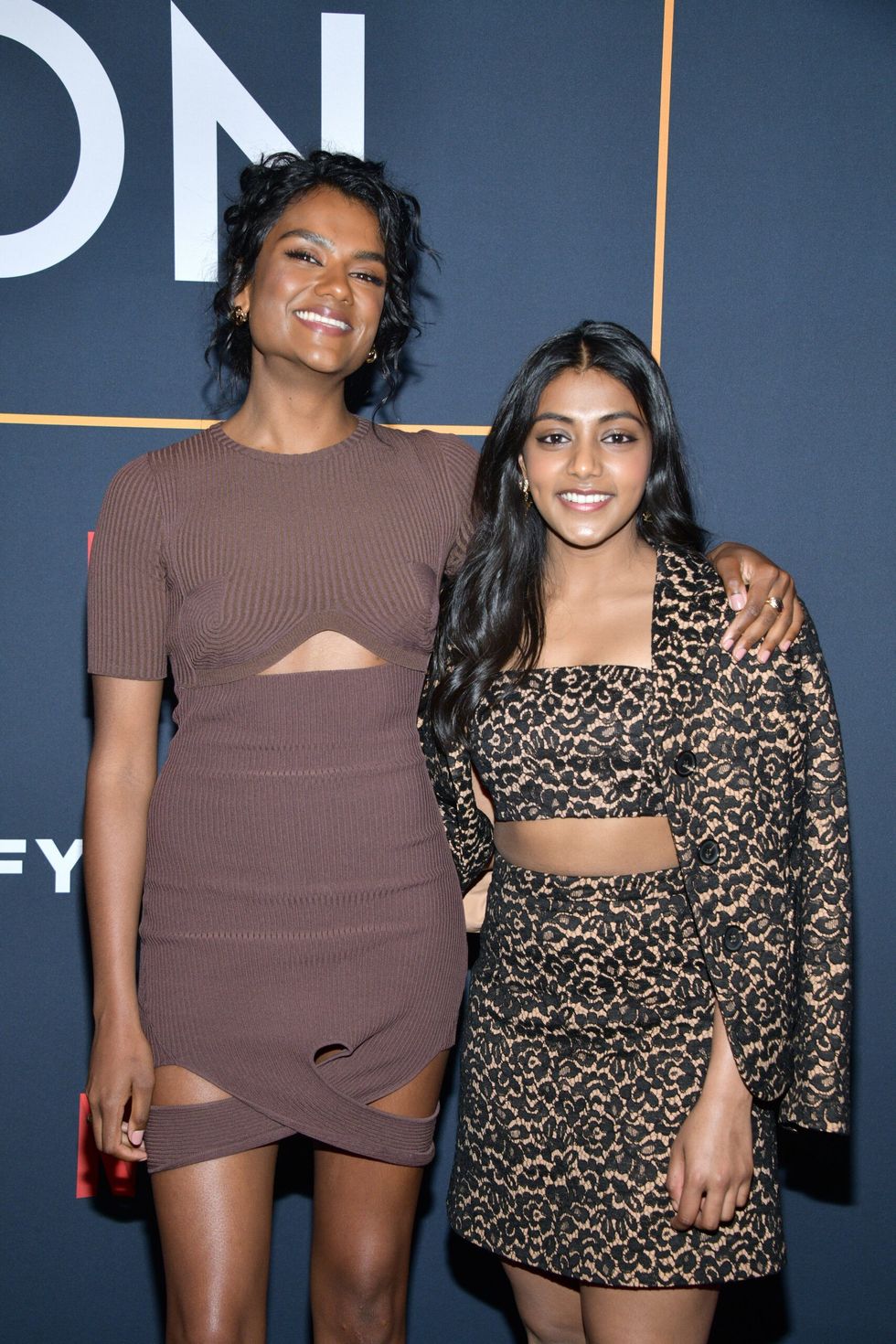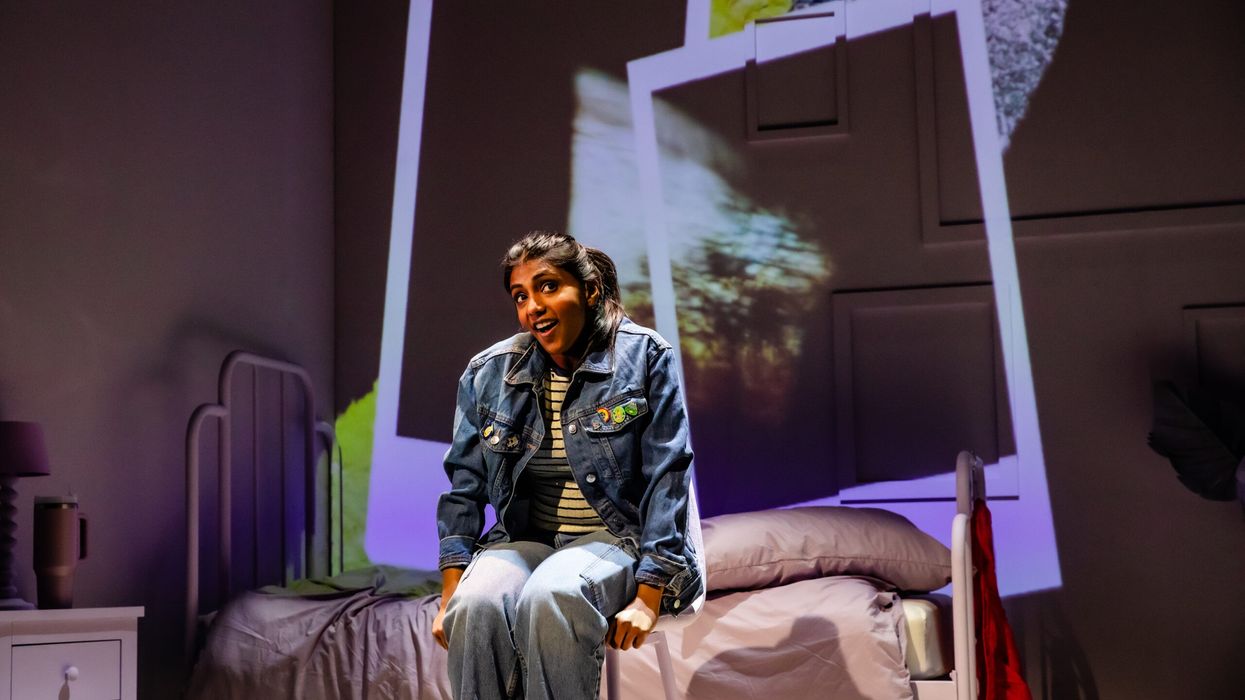THERE was a sense of occasion at the Garrick Theatre in London last Sunday (17) when Charithra Chandran made her West End debut in a solo show, Instructions for a Teenage Armageddon.
You had the feeling many young Asians had been drawn by the show’s lead, billed as “Bridgerton’s Charithra Chandran”.
She is on stage for the full 75 minutes, reflecting all the trials and tribulations of Eileen, a 16-year-old girl going on 17. She goes through the full range of emotions following the death of her elder sister, Olive, from some kind of food allergy involving Yorkshire pudding.
In 2022, Chandran, then 22, did the theatrical equivalent of Rishi Sunak. She was catapulted to global stardom when she and 26-year-old Simone Ashley (who has anglicised her name from Simone Ashwini Pillai) were cast as sisters Edwina and Kate Sharma in the second season of the Netflix drama, Bridgerton. Both actresses were born in Britain to Tamilian parents from India and Sri Lanka, respectively. The producers had made a point with the casting, leading Ashley to quip: “Hey, a message to all darkskinned desi girls, put down that fairness cream, you don’t need it.”
Period drama made in England remains the exclusive preserve of white actors and actresses on the grounds of “authenticity”. But Bridgerton, with its multicultural casting, has proved one of Netflix’s most popular shows. The first season was streamed into 82 million households globally.
Bridgerton’s US executive producer, Shonda Lynn Rhimes, herself a black woman, declared: “Making the Sharmas of south Asian descent was actually a very simple choice. I wanted to feel like the world we were living in was as three-dimensional as possible. Finding south Asian women with darker skin and making sure they were represented on screen authentically and truthfully feels like something we haven’t seen nearly enough of. I felt like it was time for us to make sure we were seeing that as much as possible.”
Despite Chandran’s casting, there is nothing specifically ethnic about Instructions for a Teenage Armageddon, which must count as progress.

For me, it has been encouraging watching Chandran’s progress. I first saw her in May 2018 when I had gone to Keble College, Oxford (alma mater of Pakistan’s former prime minister Imran Khan) to see a production of the classic play, Medea, a Greek tragedy written by Euripides and first performed in 431 BC.
The cast at Oxford was either Asian or black.
Medea is outraged, betrayed and humiliated when her husband Jason dumps her for a new lover, Princess Glauce, the daughter of King Creon. She kills her rival by gifting her a poisoned cloak and crown, which also causes the death of Creon as he embraces his dying daughter.
But in order to inflict the maximum pain on her errant husband, Medea murders their two young sons and takes away their bodies so as to deny Jason the solace of giving them a burial.
Two of the outstanding performances I found were by Chandran, a PPE (philosophy, politics and economics) student at New College as Medea, and Shreya Lakhani, an undergraduate at Balliol reading Sanskrit and Hindi, who played the Messenger.
All the mayhem occurs off stage and it is left to the Messenger to bring news of the murders to Medea. The Messenger – and the audience – watch in horror as a happy smile lights up Medea’s face.
“The challenge was to make this awful, terrible character empathetic and somehow find ways to embody the role in a genuine manner,” Chandran told me at the time.
She saw parallels with what can happen when an immigrant community is marginalised despite having contributed to British society for decades. “Medea is ultimately just one tale of what happens when you are disenfranchised – a very simple tale but that’s what’s so brilliant about it.”
Of course, I didn’t know in 2018 that Chandran would so quickly have global fame thrust on her. But clearly she had natural acting talent which has matured in the past six years – and which everyone could see in the Garrick last Sunday.
Instructions for a Teenage Armageddon, by Rosie Day, is quite a dark play, though there are some sharp and amusing one-liners. Chandran begins the show with a reference to “Triskaidekaphobia – the fear of the number 13”.
I have read that “this is commonly referred to as the age when one becomes a teenager, but for Eileen, she can only recall it to be the age she was when her older sister, Olive, died from anorexia.
“It all started (or should we say, ended) with a Yorkshire pudding. A trail of often untold devastation followed, as the wayward teen must navigate her adolescence without the one person she longed for by her side.
“A silent destruction slips through her once-perfect family, causing her parents to divorce and bring new challenges, particularly in the form of annoying little step-sisters. Judgement always lingers, with either flurries of questions that never seem to end, or a haunting knowing without volume.
“While isolation from old friends is rife, Eileen turns to her Scouts group to begin searching for herself. Meeting someone new to befriend – someone who treats her as a human in her own right – they allow for fresh experiences, such as clubbing for the first time. These simultaneously bring freedom and joy, yet lead to a pang of pain under the crushing weight of the world.”
Particularity harrowing is the section when she goes through the pain, physical and emotional, of losing her virginity and being labelled “slutty” by another girl. There were so many references to blood and medical checks that a friend, who had come with me and wasn’t feeling all that well anyway, wondered whether she would have to leave. But she managed to stay till the end.
I am glad Instructions for a Teenage Armageddon ended on a positive note. There is light for Eileen after years of angst.
Chandran is today also a global ambassador for Room to Read, a charity that is committed to providing books and literacy and practical skills programmes to children across the world.
Her PPE – which the prime minister also read at Oxford – should help.
Instructions for a Teenage Armageddon is at the Garrick Theatre, Charing Cross Road, London, until April 28.






 Cardi B creates gold umbilical cord pendant for newborn and internet can’t decide Instagram/mommymadeencapsulation/iamcardib
Cardi B creates gold umbilical cord pendant for newborn and internet can’t decide Instagram/mommymadeencapsulation/iamcardib 






